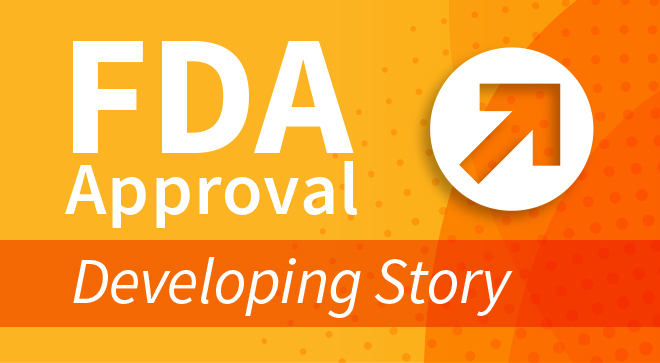By Hannah Slater
The FDA approved niraparib (Zejula) for the maintenance treatment of adult patients with advanced epithelial ovarian, fallopian tube, or primary peritoneal cancer who are in a complete or partial response to first-line platinum-based chemotherapy.1
Efficacy for the agent was investigated in the double-blind placebo-controlled phase III PRIMA trial, designed to evaluate niraparib, versus placebo, in 733 patients who were in a complete or partial response to first-line platinum-based chemotherapy.
Patients were randomized in a 2:1 fashion within 12 weeks of finishing their last cycle of chemotherapy.2 Overall, 487 participants were randomized to niraparib and 246 were randomized to placebo.
The main efficacy outcome measure was progression-free survival (PFS), and this was first tested by researchers in the homologous recombination deficient population, then in the overall population. Tumor samples were tested for homologous recombination deficiency status, defined by either presence of tumor breast cancer susceptibility gene (tBRCA) mutation or genomic instability score (GIS) ≥42. Notably, an FDA-approved companion diagnostic is not required to initiate treatment with niraparib for this indication.
The trial showed a statistically significant improvement in PFS for patients who were randomized to niraparib compared with placebo in the homologous recombination deficient and overall population. Median PFS in the homologous recombination deficient population was 21.9 months (range, 19.3 to NE) for patients receiving niraparib, while PFS was 10.4 months (range, 8.1-12.1) for those receiving placebo (HR, 0.43; 95% CI, 0.31-0.59; P < 0.0001). Additionally, median PFS in the overall population was 13.8 months (range, 11.5-14.9) for patients receiving niraparib compared with 8.2 months (range, 7.3-8.5) for individuals receiving placebo (HR, 0.62; 95% CI, 0.50-0.76; P < 0.0001).
The most common adverse events observed in ≥10% of all patients administered niraparib in the PRIMA trial were thrombocytopenia, anemia, nausea, fatigue, neutropenia, constipation, musculoskeletal pain, leukopenia, headache, insomnia, vomiting, dyspnea, decreased appetite, dizziness, cough, hypertension, AST/ALT elevation, and acute kidney injury.
According to the FDA, the recommended dose of niraparib for the first-line maintenance treatment of advanced ovarian cancer is based on body weight or platelet count. For patients weighing less than 170 lbs or who have a platelet count of less than 150,000/μL, the FDA recommends a dose of 200 mg taken orally once daily. For patients weighing greater than or equal to 170 lbs and who have a platelet count greater than or equal to 150,000/μL, the FDA recommends a dose of 300 mg taken orally once daily.
The application for this indication was approved 2 months prior to the FDA goal date. Further, this application was previously granted priority review.
Reference:
1. FDA. FDA approves niraparib for first-line maintenance of advanced ovarian cancer. FDA website. Published April 29, 2020. fda.gov/drugs/drug-approvals-and-databases/fda-approves-niraparib-first-line-maintenance-advanced-ovarian-cancer. Accessed April 29, 2020.
2. Han SN, Monk BJ, Gonzalez-Martin A. Time to first subsequent therapy (TFST) and progression-free survival 2 (PFS2) from the phase 3 randomized, double-blind PRIMA/ENGOT-OV26/GOG-3012 study in patients with newly diagnosed ovarian cancer. Data made available as part of the virtual platform for the SGO 2020 Annual Meeting. Abstract 32.
This article was published by Cancer Network.


